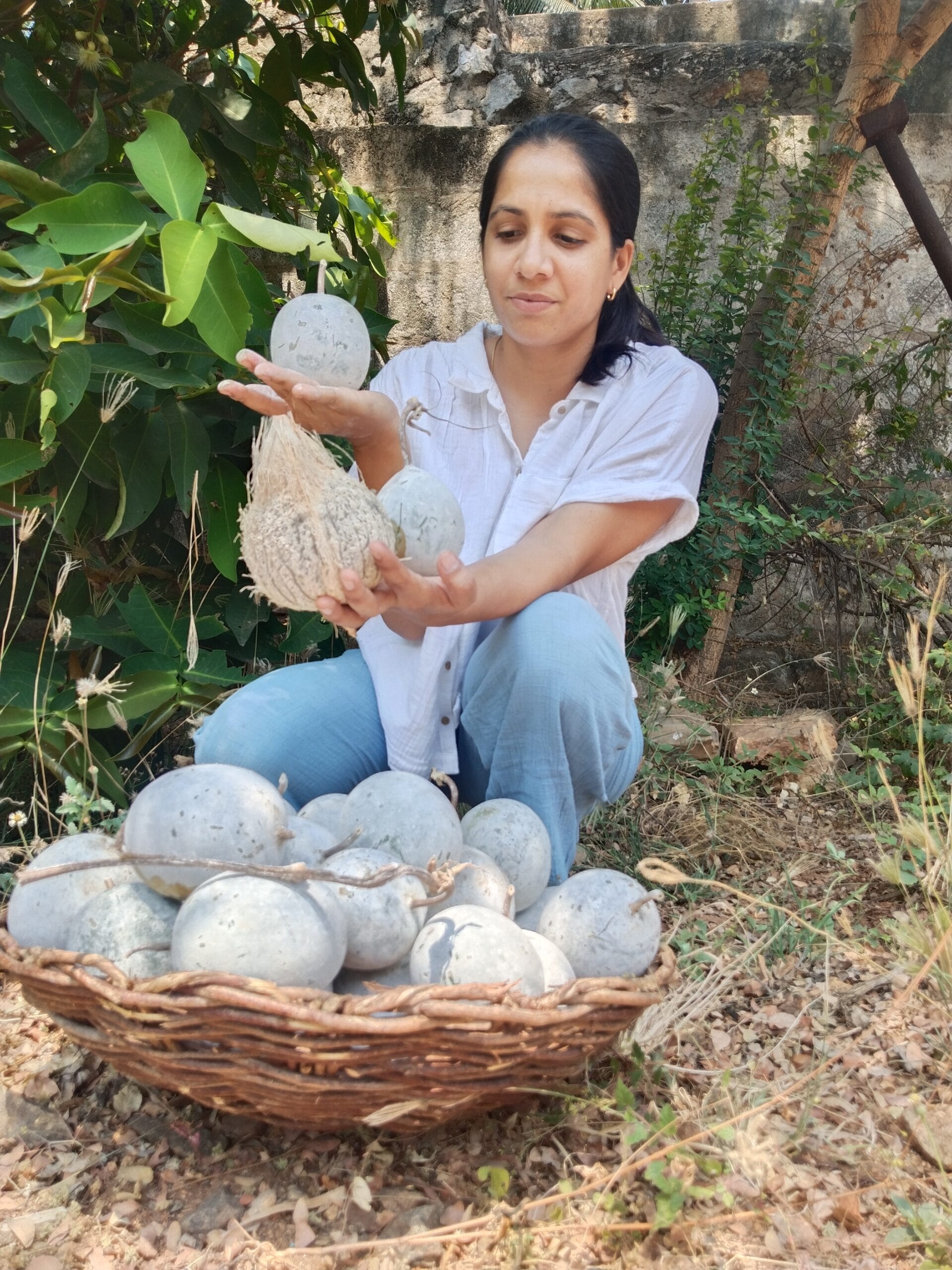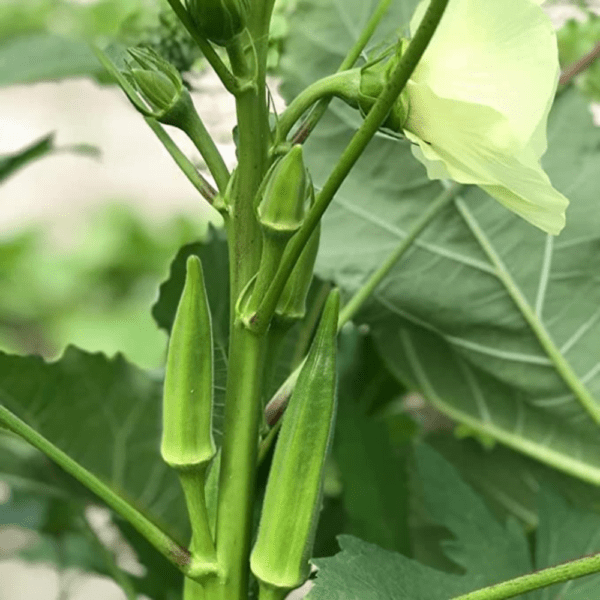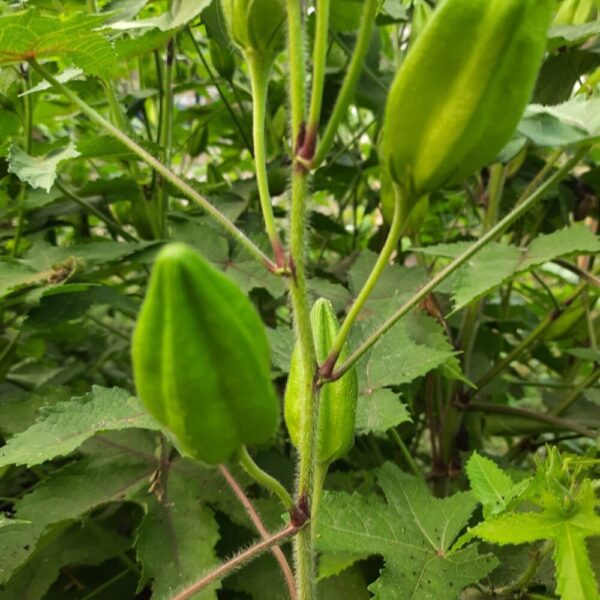Nei Kumbalam Medicinal Ash Gourd vegetable seeds
₹150.00 Original price was: ₹150.00.₹120.00Current price is: ₹120.00.
Nei Kumbalam Medicinal Ash Gourd vegetable seeds
Quantity: 30 seeds
In Kerala state of India, Ney Kumbalam is a local medicinal ash gourd variety that holds cultural importance, especially during festivals and traditional celebrations. It is a key ingredient in the elaborate Sadhya meals served during Onam and other festive occasions.
Ney Kumbalam ash gourd is a versatile and significant vegetable in Kerala’s cuisine and culture. Its adaptability to the local climate, nutritional benefits, and culinary versatility make it a cherished crop in the region. Ney Kumbalam, also known as the Kerala ash gourd, typically weighs between 4 to 10 kilograms (8.8 to 22 pounds) when fully mature.
However, under optimal growing conditions, some fruits can grow even larger, reaching weights of up to 15 kilograms (33 pounds) or more. The size and weight can vary based on factors such as soil fertility, water availability, and overall growing conditions.
For more details, see long description.
Out of stock
Nei Kumbalam Medicinal Ash Gourd vegetable seeds
Ney Kumbalam ash gourd, also known as “Kumbalanga” in Kerala, is a popular vegetable used in traditional Kerala cuisine. Here’s a more detailed look at this variety from Kerala:
Characteristics
- Appearance: Nei Kumbalam Medicinal Ash Gourd vegetable seeds from Kerala typically have a smooth, waxy exterior that can range from pale green to greyish-white. The waxy coating helps preserve the gourd for a long time.
- Size and Weight: These gourds are known for their large size, often growing to substantial weights, which makes them a valuable crop for both home gardeners and commercial farmers.
- Interior: The flesh is white, crisp, and mildly sweet. It contains numerous seeds, which are usually removed before cooking.
Cultivation
Step-by-Step Guide to Growing Ash Gourd in India
1. Selecting the Variety
- Choose a variety suited to your local climate and soil conditions. Popular varieties include the Ney Kumbalam, also known as the wax gourd or winter melon. Nei Kumbalam Medicinal Ash Gourd vegetable seeds
2. Climate and Soil Requirements
- Climate: Ash gourd thrives in warm, humid conditions with temperatures between 25-35°C (77-95°F).
- Soil: It prefers well-drained, fertile soils with a pH range of 6.0-7.5. Loamy or sandy loam soils are ideal. Nei Kumbalam Medicinal Ash Gourd vegetable seeds
3. Preparing the Soil
- Tilling: Loosen the soil to a depth of 12-15 inches to facilitate root growth.
- Fertilization: Incorporate well-rotted farmyard manure or compost into the soil to enhance fertility. A mix of nitrogen, phosphorus, and potassium fertilizers can also be applied.
4. Sowing Seeds
- Timing: In India, sowing can be done in both Kharif (monsoon) and Rabi (winter) seasons.
- Seed Treatment: Soak the Nei Kumbalam Medicinal Ash Gourd vegetable seeds in water for 24 hours before planting to improve germination rates.
- Spacing: Sow seeds directly into the field or start them in a nursery. Space them 2-3 feet apart in rows 5-6 feet apart.
5. Transplanting (if started in a nursery)
- Transplant seedlings to the main field when they have 2-3 true leaves and are about 3-4 weeks old.
- Ensure to harden off seedlings before transplanting by exposing them gradually to field conditions.
6. Watering
- Water the plants regularly, especially during the initial growth phase and during dry spells. Avoid waterlogging as it can cause root rot.
- Mulching can help retain soil moisture and control weeds.
7. Providing Support
- Ash gourd vines are climbers and benefit from trellising. Provide sturdy supports for the vines to grow vertically, which helps improve air circulation and reduce disease incidence.
Uses in Kerala Cuisine
- Kumbalanga Moru Curry: One of the most famous dishes using Ney Kumbalam ash gourd is “Kumbalanga Moru Curry,” a yogurt-based curry that combines the mild flavor of the gourd with the tanginess of yogurt, seasoned with spices and often garnished with coconut.
- Olan: This is a traditional Kerala dish prepared during festivals like Onam. It includes ash gourd cooked with cowpeas and coconut milk, flavored with green chilies and coconut oil.
- Erissery: Another popular dish, Erissery, features ash gourd cooked with lentils and spiced with a blend of coconut, cumin, and red chilies. It is a staple in Kerala’s Sadhya (feast).
- Pachadi: This is a type of raita made with ash gourd, yogurt, and coconut, often served as a side dish.
- Pickles and Preserves: In some regions, the gourd is also used to make pickles and preserves.
Nutritional and Medicinal Benefits
- Nutritional Value: Nei Kumbalam Medicinal Ash Gourd vegetable seeds is low in calories but high in dietary fiber, making it beneficial for digestion. It is also a good source of vitamins like Vitamin C and B-complex vitamins, and minerals such as calcium and potassium.
- Medicinal Uses: Traditionally, Ney Kumbalam ash gourd is used in Ayurvedic medicine. It is believed to have cooling properties and is used to treat various ailments, including digestive issues, fever, and respiratory problems.
Cultural Significance
In Kerala, Ney Kumbalam ash gourd holds cultural importance, especially during festivals and traditional celebrations. It is a key ingredient in the elaborate Sadhya meals served during Onam and other festive occasions.
In summary, Ney Kumbalam ash gourd is a versatile and significant vegetable in Kerala’s cuisine and culture. Its adaptability to the local climate, nutritional benefits, and culinary versatility make it a cherished crop in the region.
Nei Kumbalam Medicinal Ash Gourd vegetable seeds
| Weight | 20 g |
|---|---|
| Dimensions | 11 × 8.5 × 11 cm |
Related products
100 varieties Vegetable Seeds Combo Pack
₹7,000.00Original price was: ₹7,000.00.₹6,150.00Current price is: ₹6,150.00. -12%Red Yard Long Bean Gardening Seeds
₹120.00Original price was: ₹120.00.₹100.00Current price is: ₹100.00. -17%Okra Seven Lines vegetable Seeds
₹150.00Original price was: ₹150.00.₹50.00Current price is: ₹50.00. -67%Musk Mallow Kasthuri Okra Seeds
₹150.00Original price was: ₹150.00.₹99.00Current price is: ₹99.00. -34%







Reviews
There are no reviews yet.